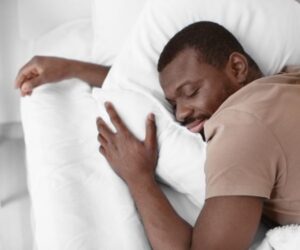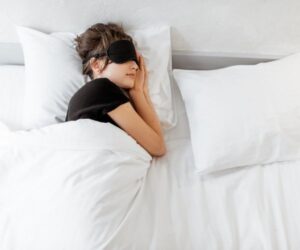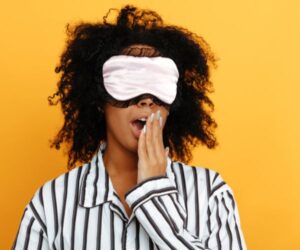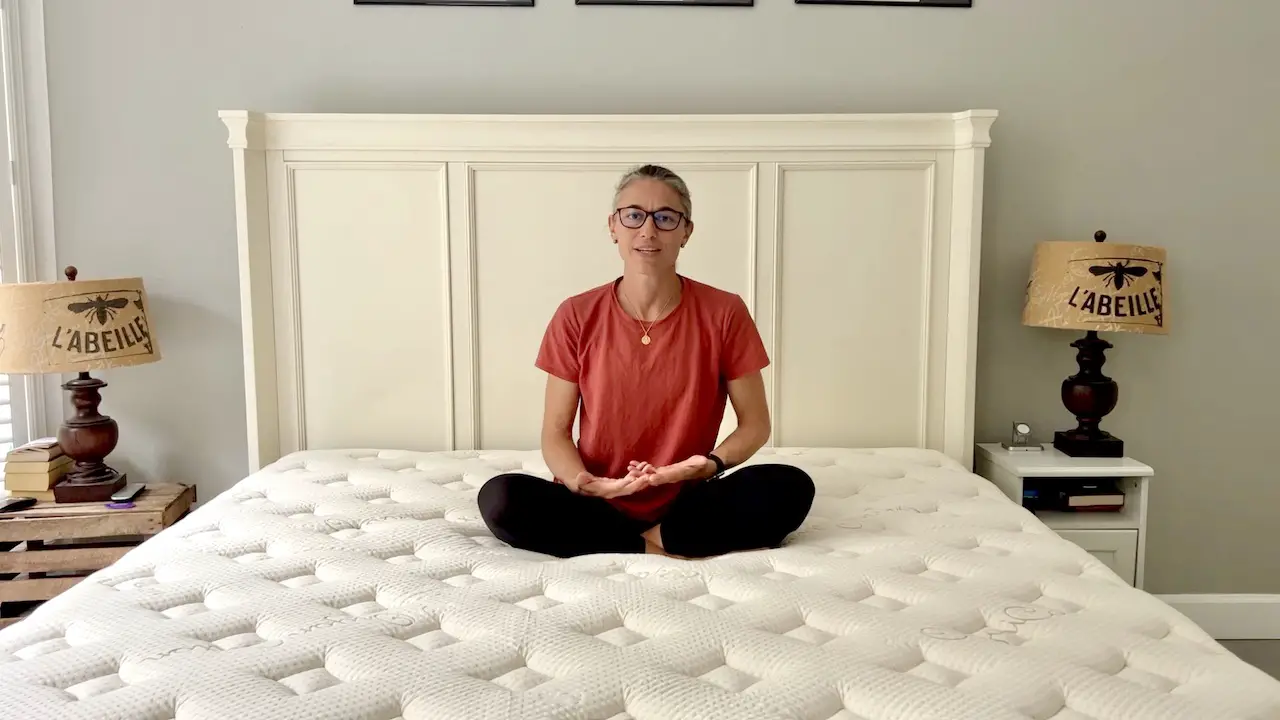ASMR FOR SLEEP
The Science, Benefits, and Best Triggers for Better Rest
Sleep is one of the most important foundations of health, yet millions of people struggle to fall asleep and stay asleep. If you are reading this, you may be one of them…
Over the last decade, one unconventional, but increasingly popular, tool has emerged in the sleep wellness space: ASMR for sleep. If you’ve ever scrolled through YouTube or TikTok late at night, you may have stumbled upon creators whispering, tapping, or role-playing scenarios designed to lull you into relaxation.
Let’s take a deeper dive into ASMR for sleep and see if it could be a tool for you.
Table of Contents
What Is ASMR?
ASMR stands for Autonomous Sensory Meridian Response. It describes a tingling sensation that begins on the scalp or neck and often spreads down the spine or limbs when triggered by certain sights, sounds, or personal interactions.
The most common ASMR triggers include:
Whispering or soft-spoken voices
Light tapping on objects
Brushing or scratching sounds
Crinkling paper or plastic
Personal attention roleplays (like pretend doctor or spa visits)
Hair brushing or scalp massage sounds
For many people, these triggers create not just tingling sensations but also feelings of calm, comfort, and relaxation. Over time, ASMR has evolved from niche internet videos into a mainstream tool for stress relief and sleep support.
Why Do People Use ASMR for Sleep?
The connection between ASMR and sleep is strong. Many fans of the practice report that it helps them unwind, reduce racing thoughts, and drift off more quickly. Here’s why ASMR for sleep works for many people:
1. Deep Relaxation
Listening to ASMR can mimic the calming effects of meditation or mindfulness. The slow pace, repetitive sounds, and gentle tone signal the brain to relax, lowering physical and mental tension before bed.
2. Reduced Stress and Anxiety
Studies suggest that ASMR may reduce heart rate and increase feelings of social comfort, which are important for people whose stress keeps them awake.
3. Bedtime Ritual
Many people incorporate ASMR into their nightly routine, much like reading a book or drinking herbal tea. This consistent ritual can train the body and mind to prepare for rest.
4. Mental Distraction
When your brain is stuck on stressful thoughts, ASMR acts as a soothing distraction, drawing attention away from worries and toward calming sensory experiences.
The Science Behind ASMR for Sleep
Although ASMR is a relatively new research field, scientists are beginning to understand its impact on the brain and body.
Neurological response: Brain imaging studies suggest that ASMR activates regions linked to reward, emotion, and relaxation.
Hormonal changes: Early findings point to increased endorphins and oxytocin release, similar to the effects of positive social bonding.
Physiological calm: Research shows that participants experience lower heart rates and higher skin conductance (a sign of relaxation) during ASMR sessions.
These responses mirror those seen in meditation, suggesting that ASMR for sleep can be a powerful tool for winding down.
Common ASMR Triggers That Help With Sleep
Not all ASMR triggers work for everyone. It’s often a matter of personal preference. Below are some of the most popular ASMR for sleep triggers:
Whispering and Soft Speaking
Gentle voices, especially whispers, are classic ASMR triggers. They create intimacy and calmness, helping the mind transition from alertness to relaxation.
Tapping and Scratching
Light, rhythmic tapping on wood, glass, or plastic can be soothing for people who enjoy repetitive, predictable sounds.
Personal Attention Roleplay
Videos simulating eye exams, haircuts, or spa treatments create a comforting feeling of care and attention, which can reduce bedtime anxiety.
Crinkling and Page Turning
Paper crinkles, book page flips, or packaging rustles are subtle but effective triggers for many.
Hand Movements and Visual Triggers
Slow gestures, such as hand waving or pretend makeup application, can be visually hypnotic and enhance the sleepy, trance-like state.
How to Use ASMR for Sleep in Your Routine
If you’re curious about trying ASMR for sleep, here are practical tips for incorporating it into your bedtime routine:
1. Choose the Right Platform
YouTube: The largest library of ASMR videos, with thousands of creators and triggers.
TikTok: Short-form ASMR clips, ideal for quick relaxation before bed.
Podcasts & Apps: Audio-only ASMR for those who prefer not to look at a screen at night.
2. Use Headphones
Many ASMR videos are recorded in binaural audio, meaning the sounds move from ear to ear. Using quality headphones creates a more immersive and relaxing experience.
3. Limit Bright Screens
Since blue light can interfere with melatonin production, try listening with your screen face down, dimmed, or switched to night mode.
4. Combine With Sleep Hygiene
ASMR works best when paired with good sleep habits:
Keep a consistent bedtime
Lower your room temperature
Avoid caffeine late in the day
5. Experiment With Triggers
Not all triggers will work for you. Try different styles and creators until you find the sounds and visuals that relax you most.
Who Benefits Most From ASMR for Sleep?
Research and anecdotal reports suggest that ASMR may be especially helpful for:
People with insomnia who need help winding down.
Those with anxiety or stress-related sleeplessness.
Students and professionals struggling with overthinking before bed.
Shift workers who need help resetting their body clock.
That said, ASMR doesn’t work for everyone. Some people feel no tingling or relaxation at all, and that’s perfectly normal.
Potential Downsides of Using ASMR for Sleep
While ASMR is safe and non-invasive, there are a few considerations to keep in mind:
Screen exposure: Watching videos at night may disrupt sleep if you’re sensitive to blue light.
Dependence: Some people may feel they cannot sleep without ASMR, making it harder to rest in environments without headphones or internet access.
Noise sensitivity: If you live with others, the sound of ASMR through speakers might be distracting or disruptive.
Balancing ASMR with other sleep hygiene practices is the best way to avoid these downsides.
ASMR vs. Other Sleep Aids
How does ASMR for sleep compare with other common methods?
White Noise Machines: Provide consistent background noise but lack the tingling, personalized triggers of ASMR.
Meditation Apps: Encourage mindfulness and breathwork, which may be more structured but less sensory. Our favorite one is completely free.
Sleep Music: Relaxing but less interactive than ASMR.
Sleep Supplements (like melatonin): Address sleep chemistry but don’t provide the same sensory relaxation.
Many people find that combining ASMR with these methods creates the most effective bedtime toolkit.
The Future of ASMR for Sleep
With rising interest in holistic sleep solutions, ASMR is likely to become an even bigger part of the wellness landscape. We may see:
Dedicated ASMR apps with personalized triggers.
Integration into smart sleep devices, like sound machines and wearable sleep trackers.
Clinical research confirming ASMR’s therapeutic role in treating insomnia, anxiety, and stress disorders.
As the science grows, so will our understanding of how to best use ASMR for sleep as a natural, non-invasive rest aid.
Practical Recommendations
If you want to try ASMR for sleep, here’s a simple bedtime experiment:
Set a consistent bedtime (e.g., 10:30 PM).
Prepare your space: cool, dark, and quiet bedroom with comfortable bedding.
Choose a 20–30 minute ASMR video or audio that you find relaxing.
Listen with headphones, lying in bed with the lights off.
Allow yourself to drift—if your mind wanders, gently return to the sounds.
After a week, evaluate whether it’s helping you fall asleep faster or sleep more deeply.
ASMR for Sleep - Final Thoughts
ASMR has transformed from a quirky internet trend into a mainstream sleep aid. While it doesn’t work for everyone, countless people report that ASMR for sleep helps them relax, reduce stress, and fall asleep more easily. Whether you’re a long-time listener or new to the practice, experimenting with different triggers could unlock a soothing new tool in your bedtime routine.
If you struggle with rest, ASMR is worth trying—especially when combined with a supportive mattress, comfortable bedding, and strong sleep hygiene practices.
References
- National Library of Medicine. (2023). Brain function effects of autonomous sensory meridian response (ASMR) video viewing. Retrieved from https://pmc.ncbi.nlm.nih.gov/articles/PMC9909086/
- National Library of Medicine. (2022). The effects of autonomous sensory meridian response (ASMR) on mood, attention, heart rate, skin conductance and EEG in healthy young adults. Retrieved from https://pmc.ncbi.nlm.nih.gov/articles/PMC9142458/
- HealthLine. (2024). Everything to Know About ASMR. Retrieved from https://www.healthline.com/health/autonomous-sensory-meridian-response
FAQ
Most frequent questions and answers
ASMR for sleep uses relaxing sounds and visuals, like whispering or tapping, to help the brain and body unwind before bed.
For many people, yes. ASMR can reduce stress and racing thoughts, making it easier to fall asleep, though results vary.
Yes, ASMR is non-invasive and safe, but it’s best paired with healthy sleep hygiene habits.
Headphones improve the experience, especially with binaural recordings, but they aren’t required.
Not everyone experiences ASMR tingles. If it doesn’t help, you can try other sleep aids like meditation, white noise, or sleep music.
What is ASMR for sleep?
ASMR for sleep uses relaxing sounds and visuals, like whispering or tapping, to help the brain and body unwind before bed.
Does ASMR really help with insomnia?
For many people, yes. ASMR can reduce stress and racing thoughts, making it easier to fall asleep, though results vary.
Is ASMR safe to use every night?
Yes, ASMR is non-invasive and safe, but it’s best paired with healthy sleep hygiene habits.
Do I need headphones for ASMR to work?
Headphones improve the experience, especially with binaural recordings, but they aren’t required.
What if ASMR doesn’t work for me?
Not everyone experiences ASMR tingles. If it doesn’t help, you can try other sleep aids like meditation, white noise, or sleep music.
Share this deal with a friend!

Laura Georgieff
Laura is a mother of three who did not sleep through the night for the first 5.5 years of her kids' lives. She is passionate about sleep quality and loves sharing her experience and knowledge of all thing bedding! It is her mission to help you make the best decisions when it comes to sleep and help you get the best deal on the market!






